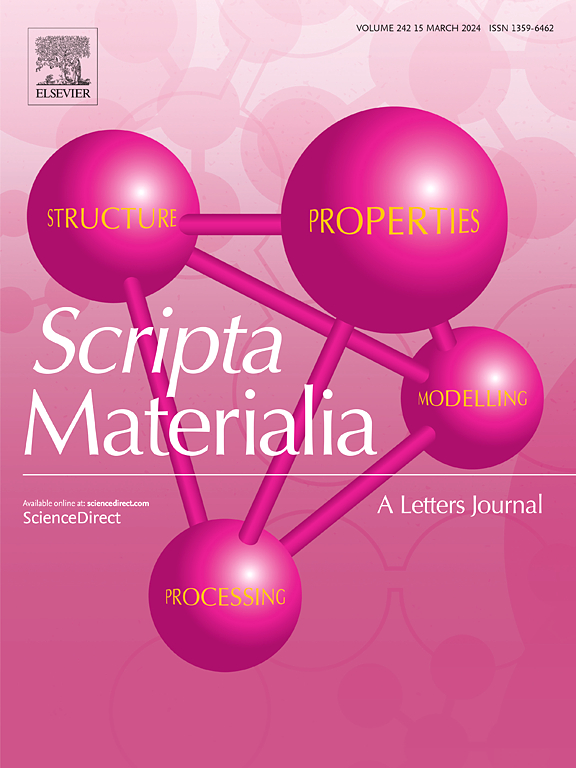Influence of boron substitution at Si-site and associated interplay between structure, water-stability, ion-transport and interfacial resistance of NASICON-structured Na3Zr2Si2PO12-based solid electrolyte
IF 5.6
2区 材料科学
Q2 MATERIALS SCIENCE, MULTIDISCIPLINARY
引用次数: 0
Abstract
Boron (B3+) substitution for Si4+ in the tetrahedral site of NASICON-structured Na3Zr2Si2PO12-based polycrystalline solid electrolyte (NZSP), as confirmed via diffraction and solid-state 11B NMR, has been found to improve the sinter-density to ∼98.4 %ρth (from ∼93.2 %ρth) and enlarge the grain size by ∼73 %. The combination of enhanced grain/bulk Na-ion conductivity due to increment in the Na-content and lowered grain-boundary resistance due to enlarged grain size, as well as accrued sinter-density, results in an overall enhancement of Na-ion conductivity by ∼143 %. Shrinkage of unit cell and reduction in grain boundary area also render B3+-substituted NZSP 'water-stable'. Furthermore, B3+-substitution improves mechanical properties and lowers Na/NZSP interfacial resistance (by ∼58 %; to ∼194 Ω cm2), which are beneficial towards suppression of Na-dendrite growth/penetration. Overall, this work not only reveals an interesting interplay between the above aspects for inorganic ion conductors, but also showcases the importance of adopting an integrated strategy towards the development of superior solid electrolytes for next-generation solid-state batteries.

si位硼取代对nasiconon结构na3zr2si2po12基固体电解质结构、水稳定性、离子输运和界面阻力的影响
在na3zr2si2po12基多晶固体电解质(NZSP)的四面体位上,硼(B3+)取代Si4+,通过衍射和固态11B核磁共振证实,烧结密度从~ 93.2% ρth提高到~ 98.4% ρth,晶粒尺寸扩大了~ 73%。由于na含量的增加而增强的颗粒/大块na离子电导率和由于晶粒尺寸增大而降低的晶界电阻以及烧结密度的增加相结合,导致na离子电导率总体提高了约143%。单位晶胞的收缩和晶界面积的减小也使B3+取代的NZSP具有“水稳定性”。此外,B3+取代改善了机械性能,降低了Na/NZSP界面电阻(约58%;至~ 194 Ω cm2),这有利于抑制na枝晶的生长/渗透。总的来说,这项工作不仅揭示了无机离子导体上述方面之间有趣的相互作用,而且还展示了采用综合策略开发下一代固态电池的优质固体电解质的重要性。
本文章由计算机程序翻译,如有差异,请以英文原文为准。
求助全文
约1分钟内获得全文
求助全文
来源期刊

Scripta Materialia
工程技术-材料科学:综合
CiteScore
11.40
自引率
5.00%
发文量
581
审稿时长
34 days
期刊介绍:
Scripta Materialia is a LETTERS journal of Acta Materialia, providing a forum for the rapid publication of short communications on the relationship between the structure and the properties of inorganic materials. The emphasis is on originality rather than incremental research. Short reports on the development of materials with novel or substantially improved properties are also welcomed. Emphasis is on either the functional or mechanical behavior of metals, ceramics and semiconductors at all length scales.
 求助内容:
求助内容: 应助结果提醒方式:
应助结果提醒方式:


